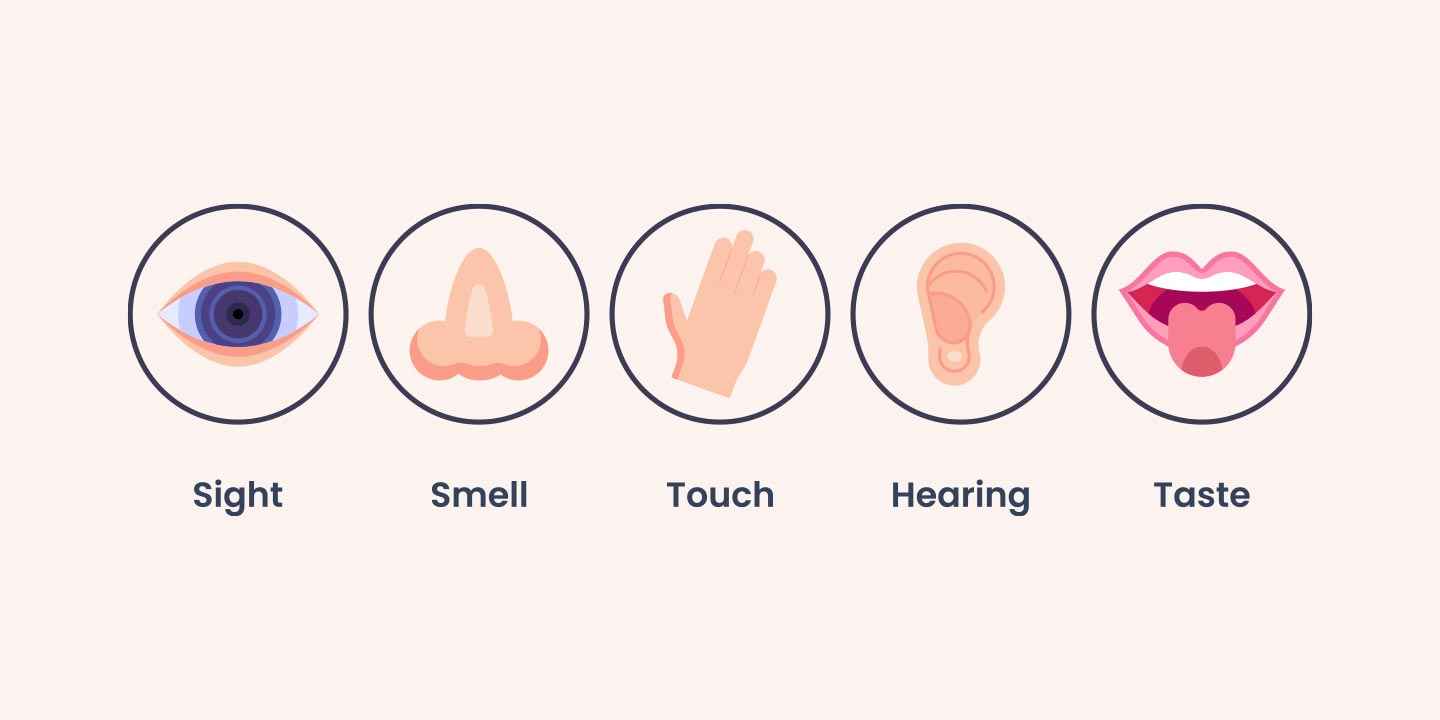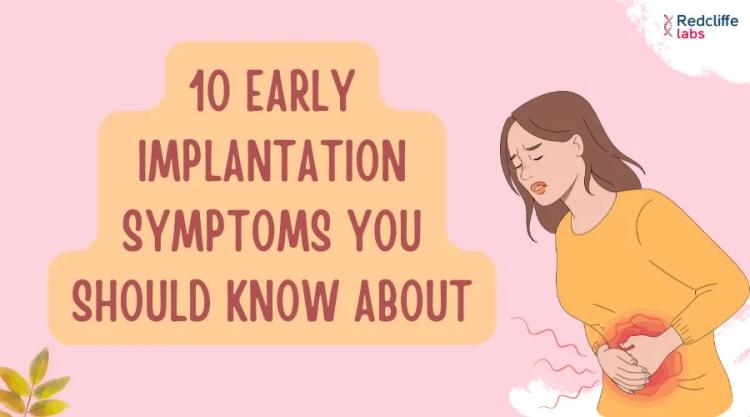Five Sense Organs, Their Functions, and How to Keep Them Healthy

Medically Reviewed By
Dr. Ragiinii Sharma
Written By Srujana Mohanty
on Sep 27, 2022
Last Edit Made By Srujana Mohanty
on Jan 11, 2025

Sensory organs biologically identify sensations and are essential organs that participate in day-to-day activities. The sensory organs function by the transmission of signals to the brain in response to the environment, and the brain helps interpret the signals.
A human body is embodied with five sensory or sense organs-
- Eyes- gives the sense of sight,
- Nose- gives the sense of smell,
- Skin- gives the sense of touch,
- Tongue- gives the sense of taste,
- Ear- gives the sense of hearing.
In cellular organisms, the sensory organs are made up of sensory cells that respond to a specific type of stimuli. These sensory receptor cells transduce the physical stimuli to nerve signals that are interpreted by the brain cells.
The optimum functioning of these sensory organs is crucial. And so, Keeping them healthy is imperative. This article talks about the five sense organs, their functioning, and ways to keep them in a healthy condition.
The Five Sense Organs and their Functions
The human sensory system has five sensory organs that help sense five elements of the physical stimulus, namely:
- Sense of sight through the eyes,
- Sense of taste through the tongue,
- Sense of smell through the nose,
- Sense of touch through the skin,
- Sense of hearing through the ears.
Every sense organ receives external stimuli and sends messages to the brain via the sensory nerve. The brain responds to messages, helps sense organs reciprocate to the stimuli, and connects humans to the external environment. Let us get into the details of each sense organ and its functions.
EYES: Sense of Sight
The sense of sight or eyes perceive things that a normal being can visualise or see. The eye can be a complex sensory organ, having 256 unique characteristics but accounting for 80% of our learning. It can capture nearly 50+ images in one millisecond.
The eye has a transparent outer layer called the cornea that bends the light. It also has a protective layer that works like a camera shutter called the iris. The light that passes through the iris goes through the small hole of the Pupil to reach the cornea. The cornea helps focus the light and allows them to pass through the lens.
The eye lenses then focus the light on the retina. The retina is the innermost layer drained by nerve cells.
They have a rod and cone-shaped cells that help translate the light into a colourful central vision. Rod-shaped cells even function in limited light zones or at night. The retina transmits the information as electrical impulses to the brain via the optic nerve.
Impairment of vision or eye functioning can cause eye conditions, including cataracts, age-associated macular degeneration, retinitis pigmentosa, glaucoma (tumours), eye infections, and diabetic retinopathy.
TONGUE: Sense of Taste
The tongue helps taste different foods. The sense perceived by the tongue can be subdivided into five distinct tastes:
- Sweet,
- Bitter,
- Salty,
- Sour,
- And Umami or savoury.
And if you are wondering, spicy is one of the tastes. According to the National Library of Medicine (NLM), spicy is a pain signal.
The tongue is embedded with taste buds. It is estimated that a normal adult has nearly 2,000 to 4,000 taste buds lined up on the tongue, at the back of the throat, on the epiglottis, oesophagus, and nasal cavity.
The sensory cells on the taste buds have pores that function like funnels. The pores have tiny taste hairs. The hair protein binds with the cells through chemicals and helps with taste.
Debunk another myth- that that tongue does not have specific zones for each flavour. All five distinct flavours can be felt or sensed by any part of the tongue. However, they differ in their level of sensitivity to taste.
According to an article, the sensation of taste and smell are correlated, and the sensation of smell is also perceived by the mouth- called olfactory referral. And so, often, people with stuffy noses have problems tasting food.
Also, the food texture felt through the skin and experienced through the eyes also contributes to its overall taste.
The basal cells of the tongue detect flavour and are regenerative cells that regenerate 10% of their cells every day. And so, the tongue burnt due to hot piping foods heals quickly and does not completely die.
The receptors of basal cells receive these taste stimuli and send electrical signals to the brain. The taste receptors express and function through their chemosensory properties and help perceive the sense of taste.
Though the tongue is a small sensory organ, it can develop conditions like oral thrush, ageusia (loss of taste), or hypogeusia (limited sense of taste).
NOSE: Sense of Smell
Did you know that humans can smell more than 1 trillion odours? The National Institutes of Health research shows how the olfactory cleft on the roof of the nasal cavity helps smell with the olfactory bulb and fossa. The olfactory cleft has nerve endings that aid in transmitting the signals to the brain.
According to Neuroscientists, humans have more than 400 smelling receptors on the floor of their nasal cavity that can help differentiate different odours just as effectively as dogs.
Decreased ability to smell or hypersomnia is a common age-related complaint, which can also be due to certain medical conditions, such as common flu, and sinusitis. Chronic conditions like schizophrenia, multiple sclerosis, brain injury, or Parkinson's can also cause loss of ability to smell or Anosmia.
SKIN: Sense of Touch
Skin is the largest sensory organ. It is the most sensitive and natural defence against many external predators. According to an article by Stanford Encyclopaedia of Philosophy, the sensation of touch through the skin is one of the first senses a human develops.
The specialised neurons of the skin transmit distinct sensations of touch- pressure, vibration, light touch, pain, tingle, texture, and temperature change to the brain.
The sensation of touch is tied to abstract concepts of compassion, pain, laughter, mood change, and even decision-making.
Ageing can affect your skin while impacting the sensation of touch, causing hypoesthesia (reduced sensitivity or loss of touch)
EAR: Sense of hearing
The ear is a spiral organ that helps us to hear. This receptor organ for hearing has three parts.
- The external ear
- The middle ear
- The inner ear
The sound travels through the external ear and auditory canal and reaches the eardrum or tympanic membrane of the middle ear. The eardrum is a thin connective tissue sheet that vibrates as the sound waves strike it.
The sound further moves into the three bones of the middle ear, namely, the malleus (hammer), incus (anvil), and stapes (stirrup). The sound creates vibrations as they strike these tiny bones and send the vibrations to the organ of the Corti. The hair cells in the organ of Corti translate the vibrations into electrical impulses that travel to the brain via the auditory sensory nerves.
Ears also modulate the sense of balance. The middle ear equalises the air pressure to that of the external atmosphere.
Hearing loss can be due to ageing or due to any medical condition. However, statistics show that hearing loss is becoming a common concern in India, affecting around 63 million Indians, especially the elderly.
How to keep the sense organs healthy?
Now that we have known each of the 5 sense organs with its distinct functions of sensations, it is essential to keep these sensory organs strong and healthy. Dysfunction or deterioration in any of the five sense organs names- eyes, nose, tongue, ears, and skin, can negatively affect health and quality of life.
One cannot live without taste, smell, sight, hearing, or sensation of touch. Loss of sense organ functions can lead to
- Higher chances of immobility,
- Impede day-to-day activities,
- Cause major mental health problems, and
- Impact the overall health.
In short, caring for your senses can improve health and quality of life. And regular check-ups and maintaining them in a healthy condition can keep life-changing complications at bay. Remember, early detection of conditions affecting your senses can help timely treatment and avert possible complications.
For Sight
Partial or complete loss of eyesight can be devastating, impacting everyday activities and your life. Here is what you can do to optimise your sense of sight.
- Eat a healthy, nutritious diet: Eyes need a good amount of Omega-3 fatty acids, vitamin C, and vitamin E. Eat plenty of green leafy vegetables, berries, citrus fruits, nuts, seeds, and fish.
- Monitor your blood pressure and blood sugar levels: Check your blood pressure and diabetes, as elevated blood pressure or sugar can affect eyesight.
- Avoid straining your eyes: Do not overstrain your eyes. Have enough lighting while reading. Practice eye exercises that relax the eye muscles and strengthen them. Avoid more screen time and take more breaks while working on the computer.
- Wear sunglasses for light sensitivity: The harmful UV radiations of the sun can damage the eyes. Sunglasses help protect the eyes when out in the sun.
- Have an annual ophthalmological visit: Make sure to update your eye prescriptions and regularly get an eye check.
For Taste and Smell
Taste and smell are interlinked. When there is a loss of smell, you tend to lose the sense of taste and vice-versa. Here are steps to protect the senses of taste and smell.
- Maintain proper oral hygiene: Poor dental or oral health can often lead to issues with taste and smell. Disease or infections of the gums and teeth can affect the taste buds and the nasal cavity. And so, maintaining good oral hygiene is a must.
- Limit your salt intake: Excess salt intake can destroy your taste buds. Reducing salt intake can improve your sense of taste and maintain sodium levels while improving overall health and improving blood pressure levels.
- Nutrition is Vital: Avoid foods that can cause allergies, sinusitis, or tonsillitis that can affect both the sense of taste and smell. Have a healthy diet and experiment with different cuisines once in a while to enhance your taste bud activity.
For Touch
Changes in the skin, particularly ageing, can decrease sensitivity. Here are some ways to take care of the skin.
- Keep yourself physically active: Issues with blood circulation can cause loss of touch. Physical activities like running, walking, swimming, and exercising, can aid blood circulation.
- Maintain healthy skin hygiene: Take care of your skin and skin problems by having a bath every day and using good-quality creams and lotions. Hydrate your skin with plenty of water intake. And use sunblock when venturing out in the sun.
- Have a healthy diet: A well-balanced diet can fuel your nerves and brain and keep your skin healthy.
For Hearing
Loss of hearing is a common issue among the elderly. Here are ways to keep your ears away from hearing loss problems.
- Protect the ears from loud noises: Hearing loss damages can be irreparable. Protect your ears from loud sounds with ear plugs. Also, keep the volumes low while watching TV or listening to music.
- Lessen the background sounds: Minimise the unnecessary background sounds, like switching off the television when not watching them, avoiding noisy and crowded places, etc.
- Visit an ENT specialist for any hearing problem: If you are experiencing any hearing issues, visit the ENT specialist. Hearing devices for specific or partial hearing loss can minimise ear strain and help in effective hearing.
Frequently Asked Questions
1. What is the function of sense organs?
The sense organs- the eyes, ears, nose, tongue, and skin, ensure senses of sight, hearing, smell, taste, and touch. These senses help improve longevity and learning while helping in better adaptation and enhancing the quality of life.
2. Which is the largest sense organ?
Skin is the largest sense organ for any organism. It provides a sense of touch and is a barrier that protects the organism from external environmental factors.
3. Can people have no sense of touch?
Numbness or loss of sensitivity is a medical condition where people can have no sense of touch. People can have reduced or partial loss of sensitivity in certain body parts.
Conclusion
The human body has five main sense organs- eyes, which provide the sense of sight; nose, which provides the sense of smell; ear, which provides the sense of hearing; skin, which provides the sense of touch; and tongue, which provides the sense of taste.
The sense organs are connected to the brain with specialised neuron cells called sensory nerve cells that help transmit the signals to the brain and help an organism perceive the senses.
While the sense organs help sense the external stimuli, taking care of them is also crucial. A healthy diet, change in activities, and regular health check-ups can help optimise sense organ functioning and keep them healthy and strong.
Sense organs are organs of the human body that receive information from the environment and transmit it to the brain. They help maintain the health of the body and provide data to interpret physical phenomena. The 5 sense organs are the eyes, nose, ears, skin and tongue. Sensory organs consist of various types of sensory receptor cells. Each type responds to a specific type of physical stimulus. These receptors are classified into general and special receptors. The general receptors are present in the skin, muscles and visceral organs. The special receptors include the eyes for vision, the nose for smell and the tongue for taste. A common complaint in ageing is a decreased ability to smell. People also lose their sense of smell if they have certain medical conditions. The human sense of smell is made up of 400 smelling receptors in the nasal cavity. The tongue works in conjunction with the nose to perceive a variety of odours.
Leave a comment
1 Comments
M.Khurshid Ayubi
Jan 20, 2025 at 12:03 PM.
I got very good information about sensory system. which is help for me. to get knowledge.



